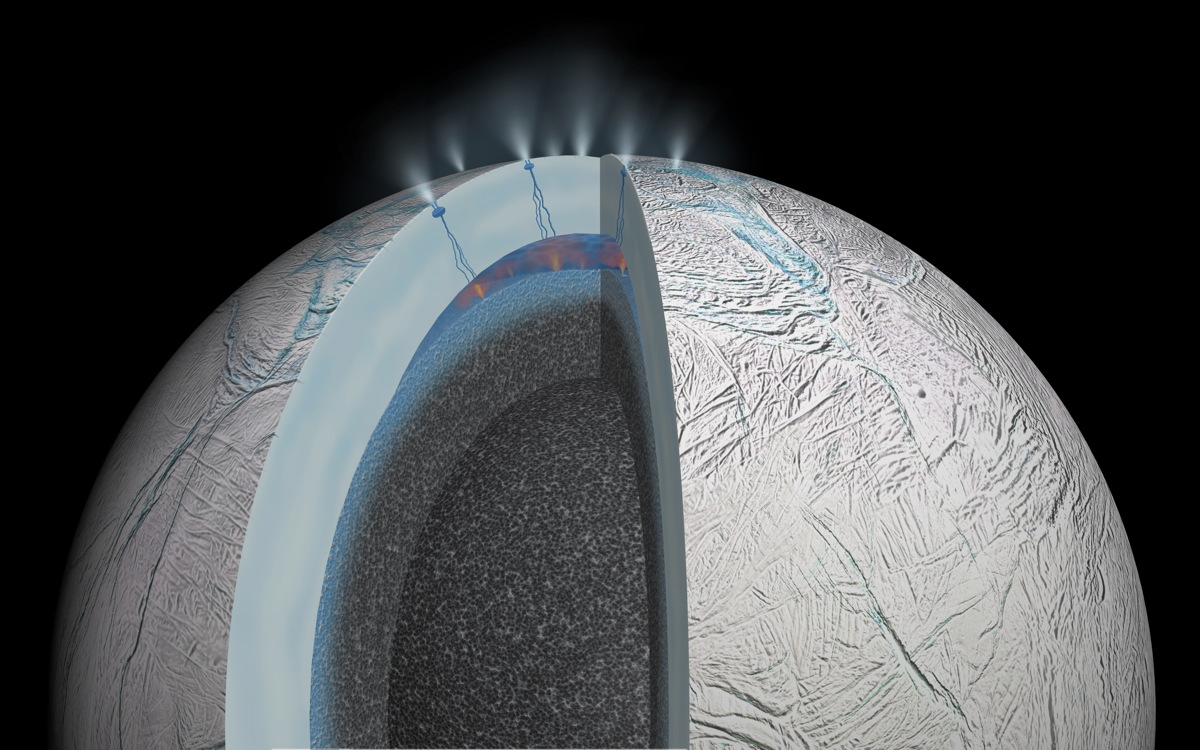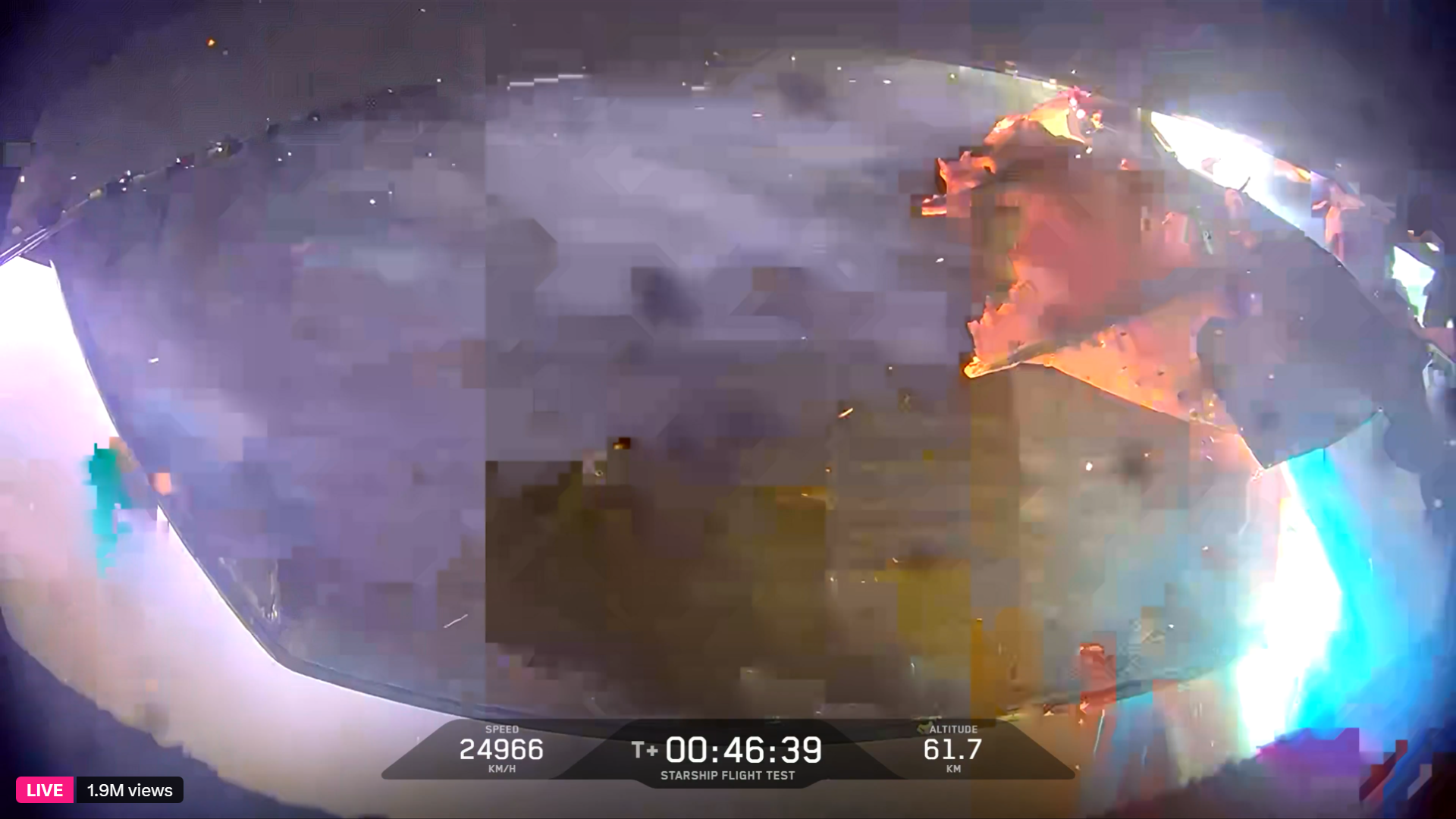Icy-Moon Discoveries: What They Mean for Alien Life Search

New discoveries about icy moons in the outer solar system have raised exciting possibilities for life beyond Earth.
Earlier this month, researchers made two big announcements: Saturn's moon Enceladus likely harbors hot springs, and Jupiter's huge satellite Ganymede apparently possesses a subsurface ocean that may contain more water than all of Earth does.
However, while the discovery makes Enceladus, which also has a subsurface ocean, even more intriguing to astrobiologists, Ganymede is still not a great bet for alien life, researchers say. [6 Most Likely Places for Alien Life in the Solar System]
Enceladus is the sixth-largest of Saturn's moons, with a diameter of only about 314 miles (505 kilometers). Despite its tiny size, Enceladus has drawn a great deal of attention due to its erupting water geysers, first seen by NASA's Cassini spacecraft in 2005. Now, scientists have found that Enceladus may have hot springs under its frozen crust. The discovery that the floor of its hidden ocean may be home to near-boiling temperatures is the first evidence of active hydrothermal vents beyond the oceans of Earth.
"This surely has implications regarding astrobiology, life-searching and all those kinds of topics," said study author Hsiang-Wen Sean Hsu, a planetary scientist at the University of Colorado, Boulder.
Specifically, these new findings suggest that the conditions on Enceladus' seafloor are similar to those found on Earth in a deep-sea field of hydrothermal vents known as Lost City in the Atlantic Ocean, which is home to a wide variety of animals, such as eels, snails, mussels, worms, shrimplike amphipods and flealike ostracods, said Gabriel Tobie, a planetologist at the University of Nantes in France.
Lost City consists of 196-foot-tall (60 meters) limestone chimneys that release alkaline fluid that is low in metals and lower than boiling temperature. In contrast, most other known hydrothermal vents on Earth give off metal-rich acidic fluid that is hotter than boiling temperature.
Breaking space news, the latest updates on rocket launches, skywatching events and more!
Alkaline hydrothermal vents might have been the birthplace of the first living organisms on the early Earth, supplying key nutrients and energy, Tobie said.
"For Enceladus, the new discovery of hot vents enhances its chance for life," Tobie told Space.com.
NASA also announced that a salty ocean hides beneath the icy crust of Ganymede, the largest moon in the solar system. Scientists using NASA's Hubble Space Telescope found that Ganymede's ocean could harbor more water than is found on Earth. Ganymede's sea may be about 60 miles (100 km) deep — 10 times the depth of Earth's oceans.
However, this finding does not necessarily raise Ganymede's chances for life, Tobie said.
"A major difference between Enceladus and Ganymede is the difference of pressure at the base of the ocean," Tobie said. The pressure at the base of Enceladus' ocean is rather low, at 50 to 100 bar — or about 50 to 100 times the atmospheric pressure of Earth at sea level. This low pressure permits water from circulating in underlying porous rocks, thus helping to drive chemical reactions that could lead life to emerge.
In contrast, the pressure at the base of Ganymede's ocean is much higher — about 15,000 to 20,000 bar, Tobie said. Under such high pressure, not only is rock less porous, but water can form a kind of ice.
"A very thick layer of high-pressure ice more than 400 kilometers [250 miles] thick will form at the base of the ocean," Tobie said. "Even if deep hot vents exist on Ganymede, the chance for life seems rather low due to the formation of this high-pressure ice layer."
However, Ganymede is not the only watery moon of Jupiter. Prior research suggests that Europa, the fourth-largest moon of Jupiter, may possess both an ocean beneath its icy surface and hot springs.
"Like in Enceladus, the ocean in Europa would be directly in contact with the rock core, which will favor water-rock interactions and exchange of nutrients with the ocean," Tobie said.
"Both Europa and Enceladus have a high astrobiological potential," he added. "But for the moment, it is only a potential. Only future missions with in situ investigations will really answer if it is more than only a potential."
Follow us @Spacedotcom, Facebook or Google+. Originally published on Space.com.
Join our Space Forums to keep talking space on the latest missions, night sky and more! And if you have a news tip, correction or comment, let us know at: community@space.com.

Charles Q. Choi is a contributing writer for Space.com and Live Science. He covers all things human origins and astronomy as well as physics, animals and general science topics. Charles has a Master of Arts degree from the University of Missouri-Columbia, School of Journalism and a Bachelor of Arts degree from the University of South Florida. Charles has visited every continent on Earth, drinking rancid yak butter tea in Lhasa, snorkeling with sea lions in the Galapagos and even climbing an iceberg in Antarctica. Visit him at http://www.sciwriter.us
